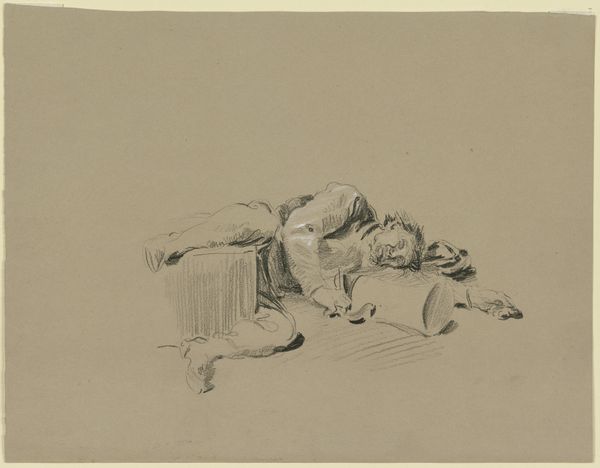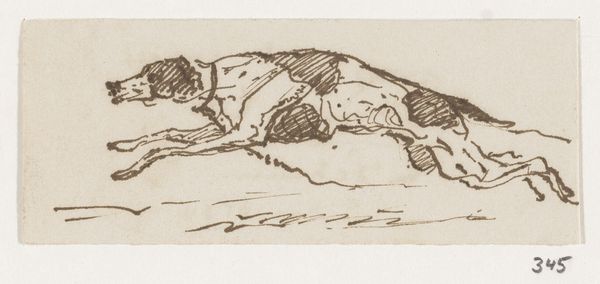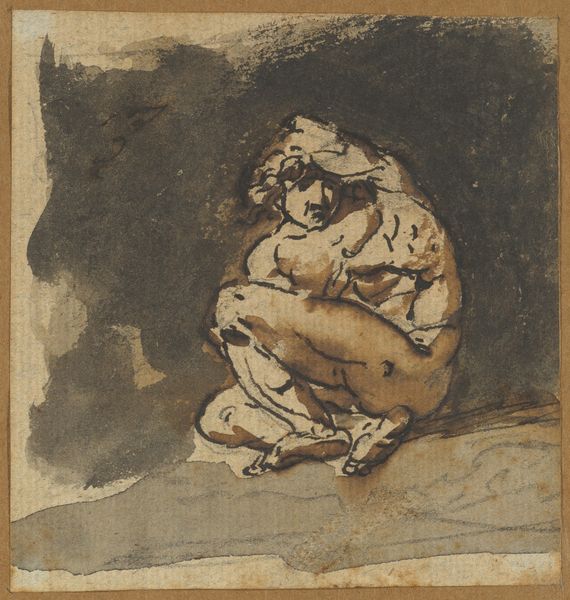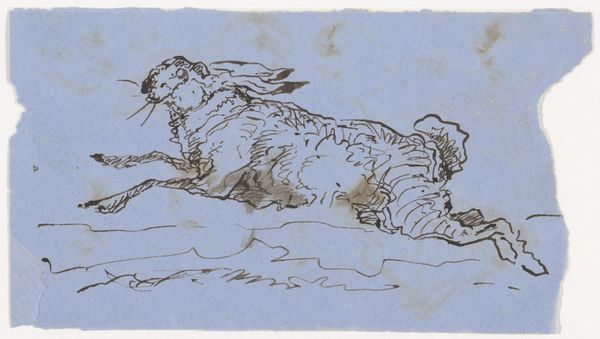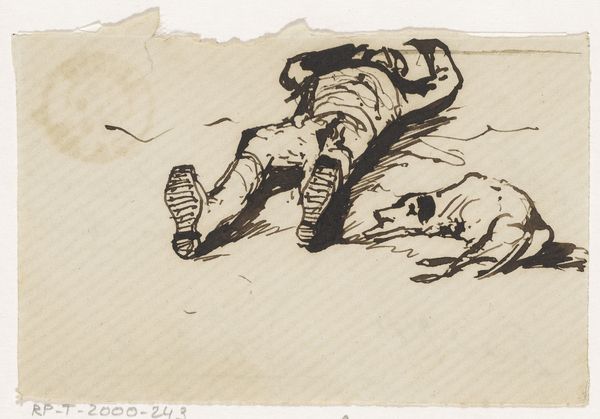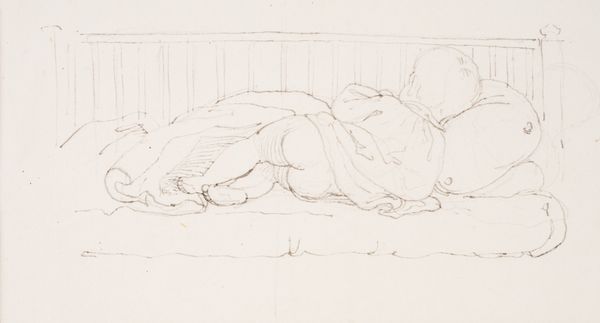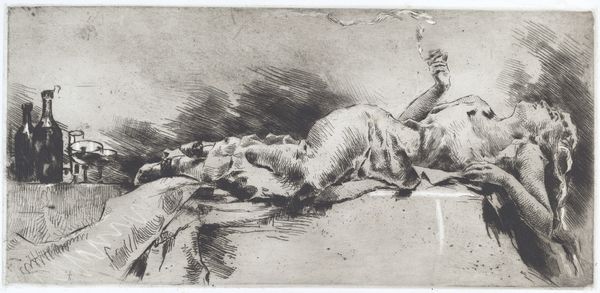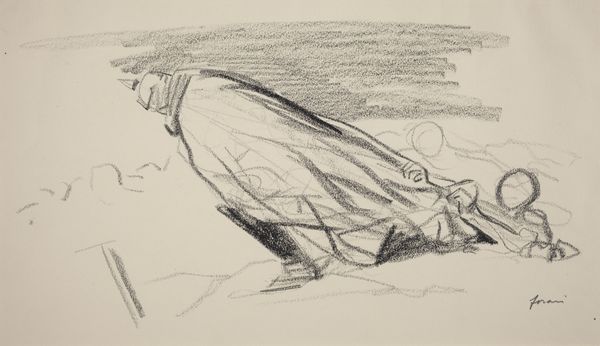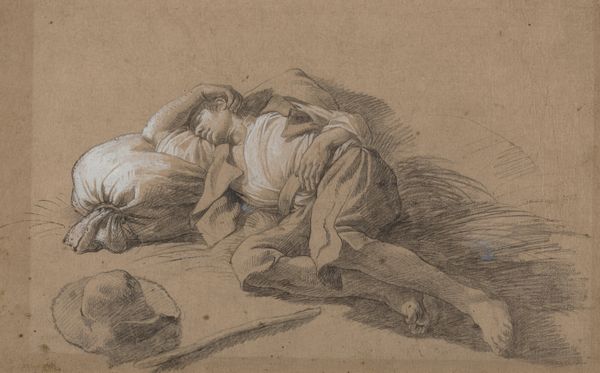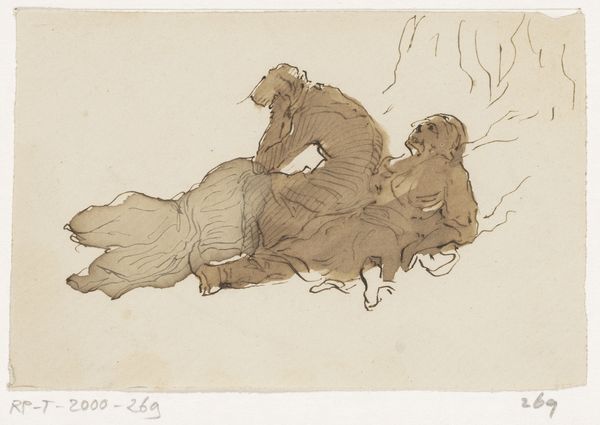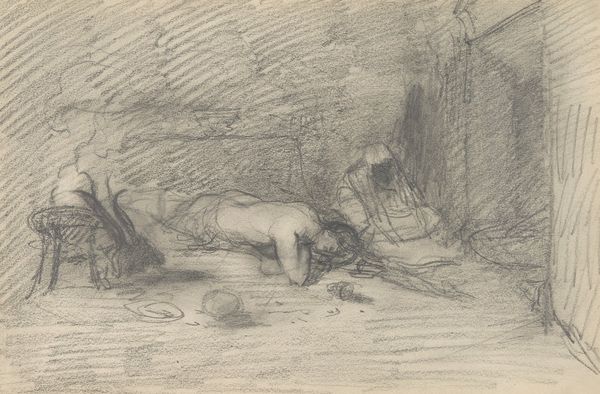
drawing, ink
#
drawing
#
toned paper
#
light pencil work
#
pencil sketch
#
incomplete sketchy
#
charcoal drawing
#
possibly oil pastel
#
ink
#
underpainting
#
15_18th-century
#
watercolour illustration
#
watercolor
#
environment sketch
Copyright: Public Domain
Editor: Here we have Augustin Pajou's "Study of a Sleeping Youth, Seen from Behind," dating back to sometime between 1752 and 1756. It appears to be made with ink and watercolor on toned paper. There's a fragility to the rendering that I find compelling. What's your read on it? Curator: It whispers, doesn’t it? Like a secret. I’m instantly drawn to the artist's quiet observation. He captures such vulnerability in the curve of the youth's back. See how the soft washes of color create a dreamlike state. What story do you imagine unfolding here? Editor: Perhaps a traveler resting after a long journey. There’s an architectural structure in the background. Was it common to see studies of people sleeping during this period? Curator: Sleep became quite fashionable. It mirrors the Rococo era’s fascination with emotion and the private self. It suggests innocence, escape from the waking world, and a touch of melancholic beauty. Note the incomplete lines; it feels less about precise representation and more about fleeting impressions, a stolen moment. It also serves as an "Acadmie," a study, for potential poses for sculpture, the master class. It's an exercise in skill, a tryout, a bit like daydreaming while awake! What’s your takeaway? Editor: That’s interesting. I initially saw it as just a casual sketch, but knowing its purpose really transforms my view. Curator: Precisely! It shows us how even seemingly simple images can hold layers of intention. These little gems offer a window into the artistic process and into the past, in an intimate way, wouldn't you say?
Comments
No comments
Be the first to comment and join the conversation on the ultimate creative platform.
